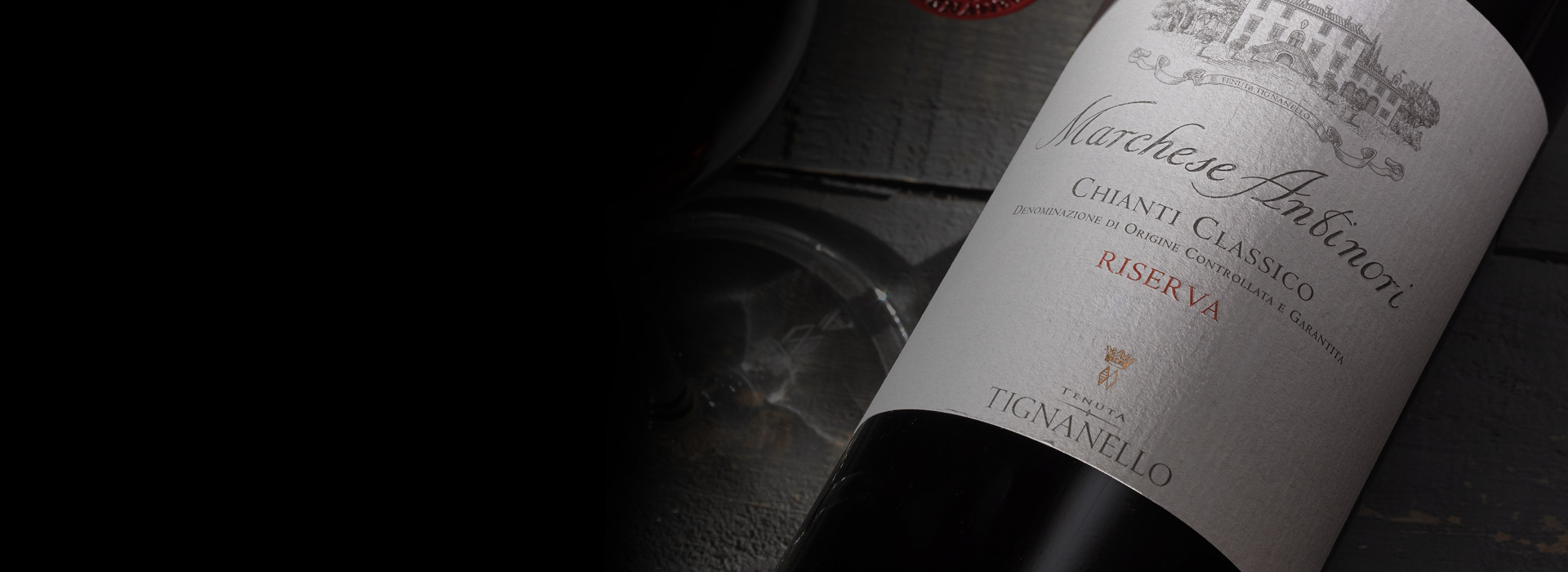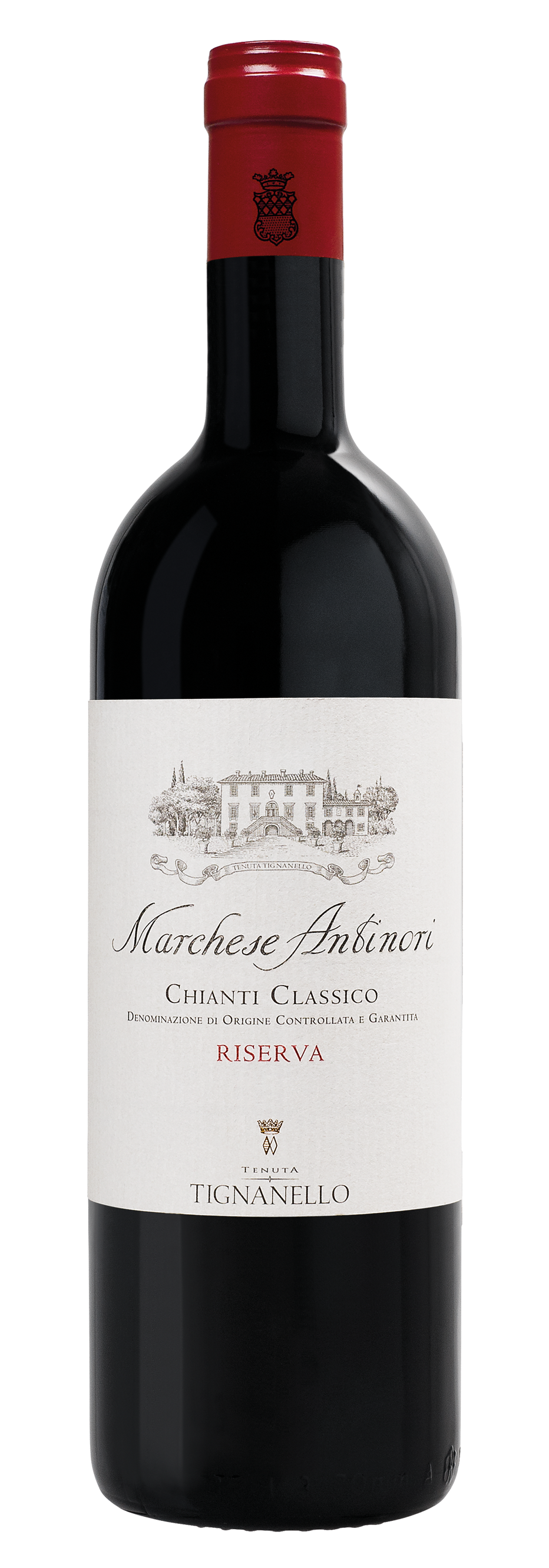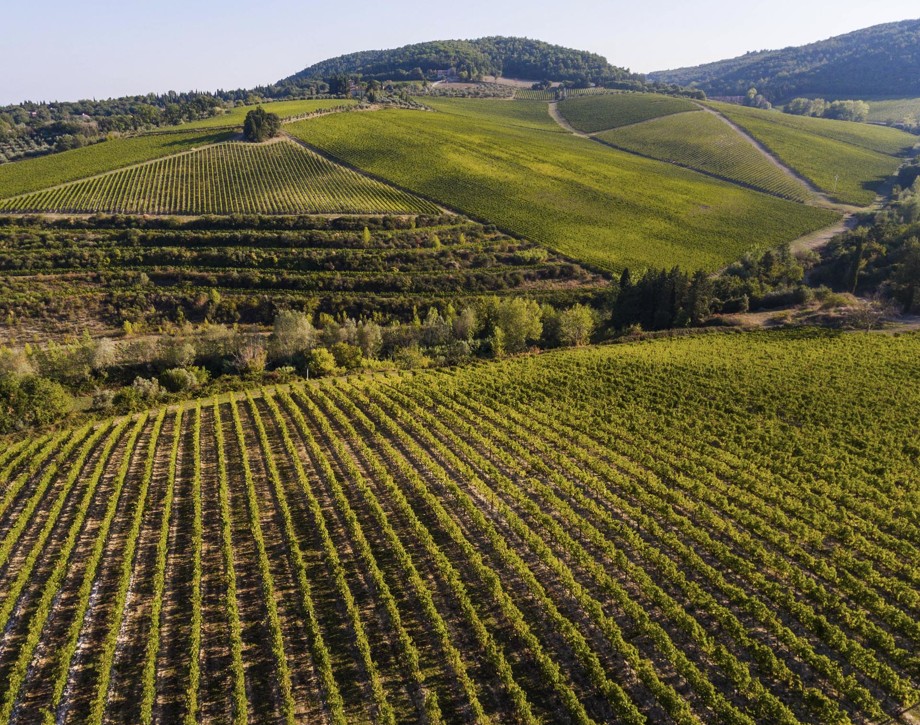Marchese Antinori

Climate
The growing season in Chianti Classico was characterized by a cold and rainy late autumn and winter, rainfall which guaranteed a good supply of ground water for the spring which followed, one with mild temperatures and with no return of the previous cold. Bud break, consequently, was a regular one, and within normal seasonal averages; in June and during the first days of July there were rainstorms which favored the vegetative vigor of the vines. Flowering and fruit set, accordingly, were regular as well even if the rain influenced the size of the berries and grape bunches, whose development in this period was ahead of seasonal averages. The vines continued to vegetate rather vigorously during the summer, only to encounter an August, and an initial ten day period in September which were very hot and dry. Despite these somewhat extreme conditions, the weather pattern during the second half of September and the month of October was quite favorable to the final ripening, with warm days and cool evenings and nights, a pattern which was very positive for the complete maturation of the crop. Both the Sangiovese and the Cabernet grapes needed many days on the vine to complete and perfect their ripening, to the point that picking was principally carried out during the last days of September and the first days of October. The level of the grapes brought to the cellar was extremely high both from the point of view of healthiness and, above all, quality potential and aroused exceptional of true excellence in the wines to be made. Total annual rainfall: 29. 5 inches (73.9 centimeters) Average daily temperatures April 1st – October 31st: 21° Fahrenheit (21.7 ° centigrade) Total rainfall April 1st – October 31st : 11.7 inches (29.3 centimeters)
Vinification
The climate of the final phases of the growing season allowed picking to be carried out in as selective and targeted a way as possible in order to fully respect the relevant factors for each individual plot; picking, entirely by hand, was carried out on the basis of exposure, altitude, ripening date, and the analytical values of the grapes. The grape bunches, once in the cellar, were gently destemmed and pressed in order to preserve typical flavors and aromas, so important in Sangiovese. Once in the stainless steel fermenting tanks, maceration was accompanied by soft extraction methods (pumping over and délestage) aimed at an intense extraction which also preserved elegance and supple, sweet tannins. From the very beginning of the fermentation process, the musts showed much richness of color and structure thanks to the very favorable growing season. The fermentation lasted approximately eight days and the wine remained in contact with its skins for another nine to ten days. After the wine was run off its skins, it immediately went into small barrels, principally of French oak, where it went through a complete and spontaneous malolactic fermentation, which terminated by the end of the year. After racking, the wine, still kept separate on the basis of its individual vineyard source, was aged for a year in 60 gallon French and Hungarian oak barrels. During this lengthy period, the various lots were regularly tasted and monitored in order to maximize the quality to be achieved during the phase of oak aging; they were then assembled for the final blend at the end of the aging period. The wine was bottled and then given an additional twelve months of bottle aging before commercial release.
Historical Data
The Tignanello estate is located in the heart of the Chianti Classico production zone, nestled between the valleys of the Greve and Pesa rivers, and extends over close to 800 total acres (319 hectares), some 130 of which (415 hectares) are planted to vines. The vineyards consist principally of the native Sangiovese grape along with such non-traditional varieties as Cabernet Sauvignon and Cabernet Franc. The Marchese Antinori is an historic wine of the Antinori cellars which, since 2011, is produced from the grapes of the Tignanello estate. It is a wine which presents itself as the full expression of the quality and elegance of the Sangiovese of this part of Tuscany.
Tasting Notes
An intense ruby red with occasional brick-toned highlights, the wine’s aromas are fragrant and fresh with pleasurable notes of red berry fruit and exotic fruit and hints of liquorice, currants, vanilla, and passion fruit. The notes of Chianti Classico-style Sangiovese dominate the nose and fuse perfectly with a Cabernet which is equally important in characterizing this wine. On the palate the wine is highly pleasurable, supple, round, and soft in texture and savory as well. Tonic and vibrant sensations characterize a notably elegant finish and aftertaste.
Awards
I Vini Di Veronelli 2013 Guide Tre Stelle Italy James Suckling 93/100 USA

The Wine
This Antinori family’s historic label, since the 2011 vintage Marchese Antinori has been produced with grapes exclusively from the Tignanello vineyard. It’s made almost entirely with Sangiovese with a small percentage of other complementary varieties. A wine that fully expresses the quality and elegance of Sangiovese grapes grown in this area.

Climate
The growing season in Chianti Classico was characterized by a cold and rainy late autumn and winter, rainfall which guaranteed a good supply of ground water for the spring which followed, one with mild temperatures and with no return of the previous cold. Bud break, consequently, was a regular one, and within normal seasonal averages; in June and during the first days of July there were rainstorms which favored the vegetative vigor of the vines. Flowering and fruit set, accordingly, were regular as well even if the rain influenced the size of the berries and grape bunches, whose development in this period was ahead of seasonal averages. The vines continued to vegetate rather vigorously during the summer, only to encounter an August, and an initial ten day period in September which were very hot and dry. Despite these somewhat extreme conditions, the weather pattern during the second half of September and the month of October was quite favorable to the final ripening, with warm days and cool evenings and nights, a pattern which was very positive for the complete maturation of the crop. Both the Sangiovese and the Cabernet grapes needed many days on the vine to complete and perfect their ripening, to the point that picking was principally carried out during the last days of September and the first days of October. The level of the grapes brought to the cellar was extremely high both from the point of view of healthiness and, above all, quality potential and aroused exceptional of true excellence in the wines to be made. Total annual rainfall: 29. 5 inches (73.9 centimeters) Average daily temperatures April 1st – October 31st: 21° Fahrenheit (21.7 ° centigrade) Total rainfall April 1st – October 31st : 11.7 inches (29.3 centimeters)
Vinification
The climate of the final phases of the growing season allowed picking to be carried out in as selective and targeted a way as possible in order to fully respect the relevant factors for each individual plot; picking, entirely by hand, was carried out on the basis of exposure, altitude, ripening date, and the analytical values of the grapes. The grape bunches, once in the cellar, were gently destemmed and pressed in order to preserve typical flavors and aromas, so important in Sangiovese. Once in the stainless steel fermenting tanks, maceration was accompanied by soft extraction methods (pumping over and délestage) aimed at an intense extraction which also preserved elegance and supple, sweet tannins. From the very beginning of the fermentation process, the musts showed much richness of color and structure thanks to the very favorable growing season. The fermentation lasted approximately eight days and the wine remained in contact with its skins for another nine to ten days. After the wine was run off its skins, it immediately went into small barrels, principally of French oak, where it went through a complete and spontaneous malolactic fermentation, which terminated by the end of the year. After racking, the wine, still kept separate on the basis of its individual vineyard source, was aged for a year in 60 gallon French and Hungarian oak barrels. During this lengthy period, the various lots were regularly tasted and monitored in order to maximize the quality to be achieved during the phase of oak aging; they were then assembled for the final blend at the end of the aging period. The wine was bottled and then given an additional twelve months of bottle aging before commercial release.
Historical Data
The Tignanello estate is located in the heart of the Chianti Classico production zone, nestled between the valleys of the Greve and Pesa rivers, and extends over close to 800 total acres (319 hectares), some 130 of which (415 hectares) are planted to vines. The vineyards consist principally of the native Sangiovese grape along with such non-traditional varieties as Cabernet Sauvignon and Cabernet Franc. The Marchese Antinori is an historic wine of the Antinori cellars which, since 2011, is produced from the grapes of the Tignanello estate. It is a wine which presents itself as the full expression of the quality and elegance of the Sangiovese of this part of Tuscany.
Tasting Notes
An intense ruby red with occasional brick-toned highlights, the wine’s aromas are fragrant and fresh with pleasurable notes of red berry fruit and exotic fruit and hints of liquorice, currants, vanilla, and passion fruit. The notes of Chianti Classico-style Sangiovese dominate the nose and fuse perfectly with a Cabernet which is equally important in characterizing this wine. On the palate the wine is highly pleasurable, supple, round, and soft in texture and savory as well. Tonic and vibrant sensations characterize a notably elegant finish and aftertaste.
Awards
I Vini Di Veronelli 2013 Guide Tre Stelle Italy James Suckling 93/100 USA

Tenuta Tignanello
The Tenuta Tignanello estate is in the heart of Chianti Classico, in the gently rolling hillsides between the Greve and Pesa river valleys. It extends over an area of 319 hectares (788 acres), of which about 165 (407 acres) are dedicated to vines. Two of the estate’s prized vineyards are on the same hillside, Tignanello and Solaia, on soils that originated from marine marlstone from the Pliocene period rich in limestone and schist.
Soil
Calcareous rocky soils with alberese (marl limestone) and marl.


















